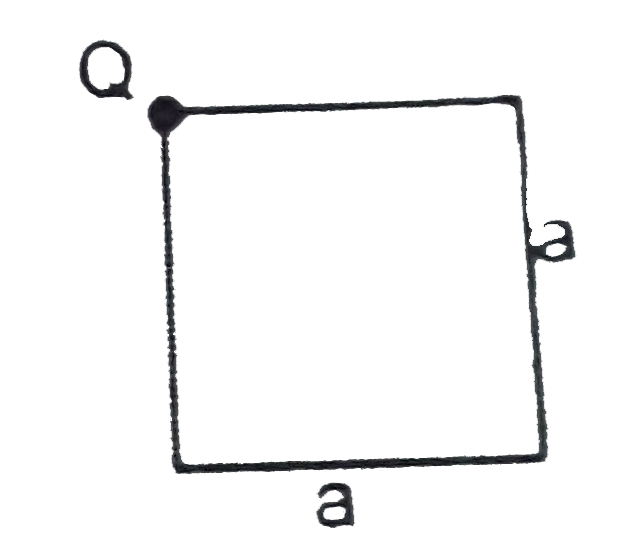A charge Q is placed at each of the two opposite corners of a square of side a.A charge is placed at each of the other two corners. (a) if the reultant electrical force system of charges? What is the signification of its negative potential energy?
The correct Answer is:Q=−2√2q,14πε0⋅−7q2√2Q they form a stable system
Step by step video, text & image solution for A charge Q is placed at each of the two opposite corners of a square of side a.A charge is placed at each of the other two corners. (a) if the reultant electrical force system of charges? What is the signification of its negative potential energy? by Physics experts to help you in doubts & scoring excellent marks in Class 12 exams.
Topper's Solved these Questions
- BOOK - NN GHOSHCHAPTER - ELECTRIC FIELD AND POTENIALEXERCISE - EXERCISE21videos
ELECTRIC FIELD AND POTENIAL
- BOOK - NN GHOSHCHAPTER - DYNAMO, MOTOR, TRANSFORMEREXERCISE - EXERCISE8videos
DYNAMO, MOTOR, TRANSFORMER
- BOOK - NN GHOSHCHAPTER - ELECTROMAGNETIC INDUCTIONEXERCISE - EXERICISES-B18videos
ELECTROMAGNETIC INDUCTION
Similar Questions
A point charge Q is placed at the corner of a square of side a. Find the flux through the square.
View SolutionTwo equal point charges Q=+√2μC are placed at each of the two opposite corners of a square and equal point charges q at each of the other two corners. What must be the value of q so that the resultant force on Q is zero?
View Solution
Knowledge Check
- Question 1 - Select One
A charges Q is placed at each of the two opposite corners of a square. A charge q is placed to each of the other two corners. If the resultant force on each charge q is zero, then
Aq=√2QBq=−√2QCq=2√2QDq=−2√2Q - Question 2 - Select One
A charge Q is placed at each of the opposite corners of square. A charge q is placed at each of the other two corners. If the net electrical force on Q is zero , then Q/q equals.
A−1B1C−1√2D−2√2 - Question 3 - Select One
A charge Q is place at each of the opposite corners of a square. A charge q is placed at each of the other two corners. If the net electrical force on Q is zero, then Q/q equals:
A(a) −1B(b) 1C(c) −1√2D(d) −2√2
A point charge Q is placed at the corner of a square of side a, then find the flux through the square.
 View Solution
View SolutionA charge 'Q' is placed at each corner of a cube of side 'a'. The potential at the centre of the cube is
View SolutionFour identical charges i.e. q is placed at the corners of a square of side a. The charge Q that must be placed at the centre of the square such that the whole system of charges in equilibrium is
View SolutionEqual charges q are placed at the three corners B, C, D of a square ABCD of side a. The potential at A is
View SolutionA charge +q is fixed to each of three corners of a square .On the empty corner a charge Q is placed such that there is no net electrostatic force acting on the diagonally opposite charge then
View Solution

